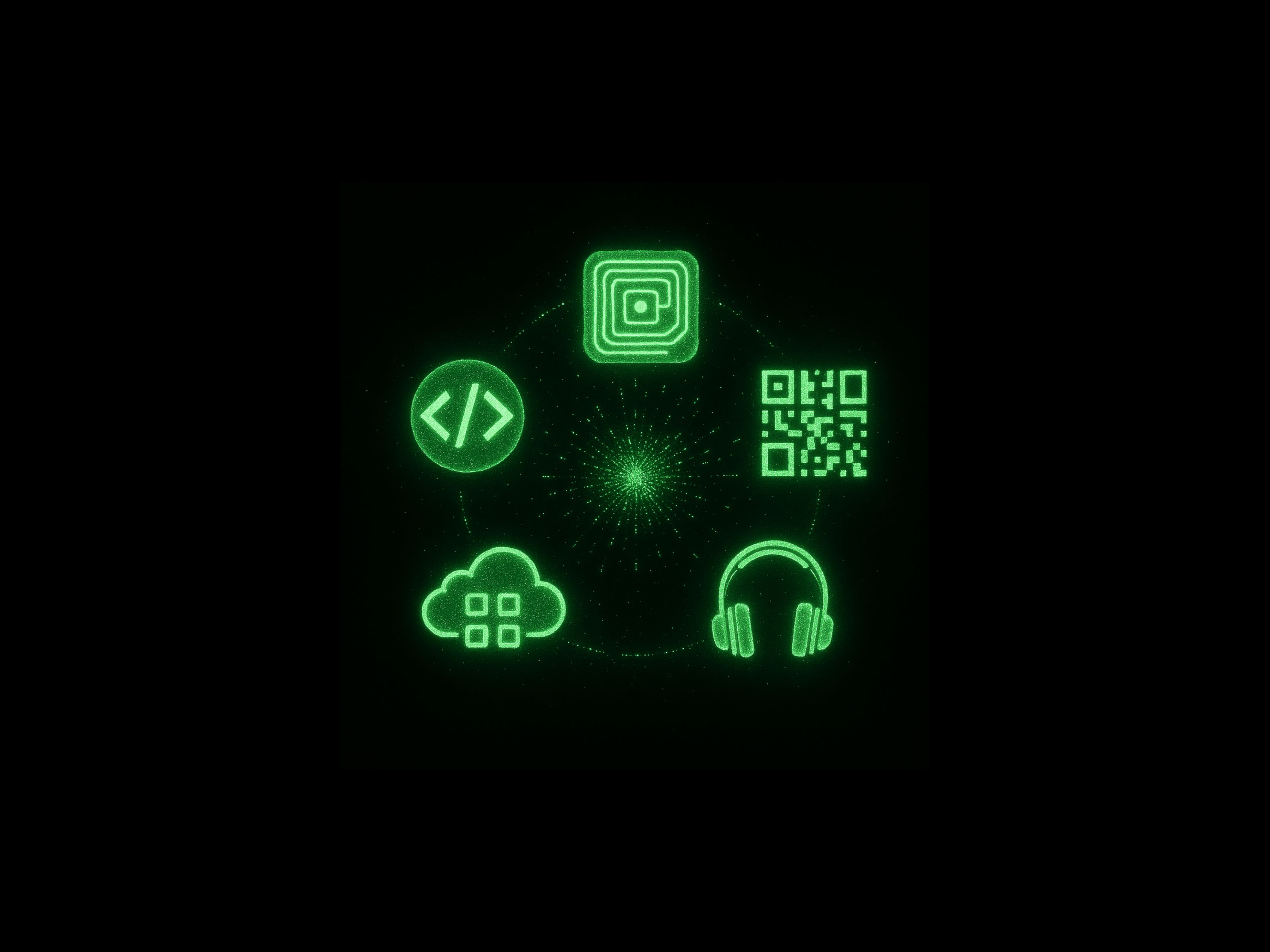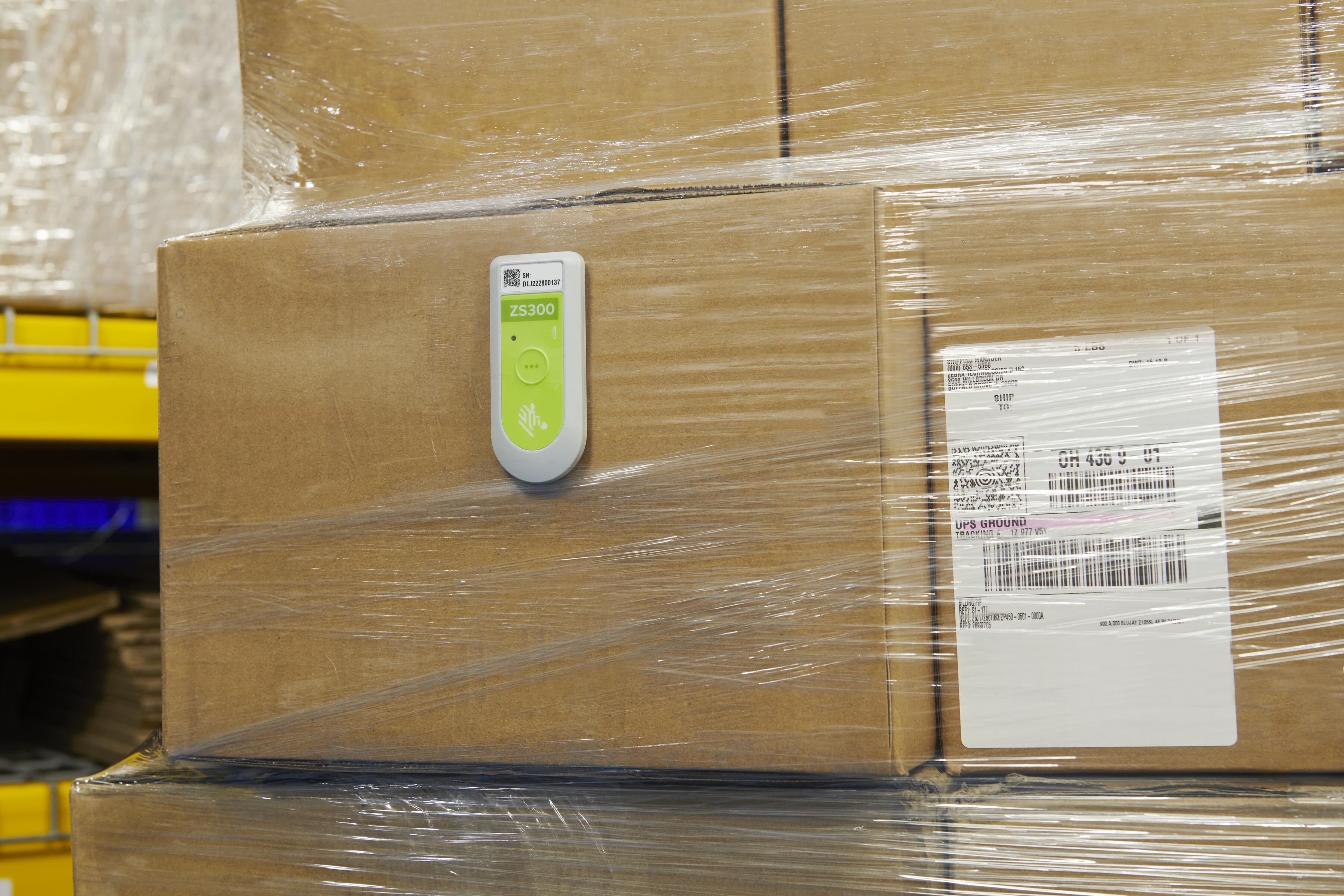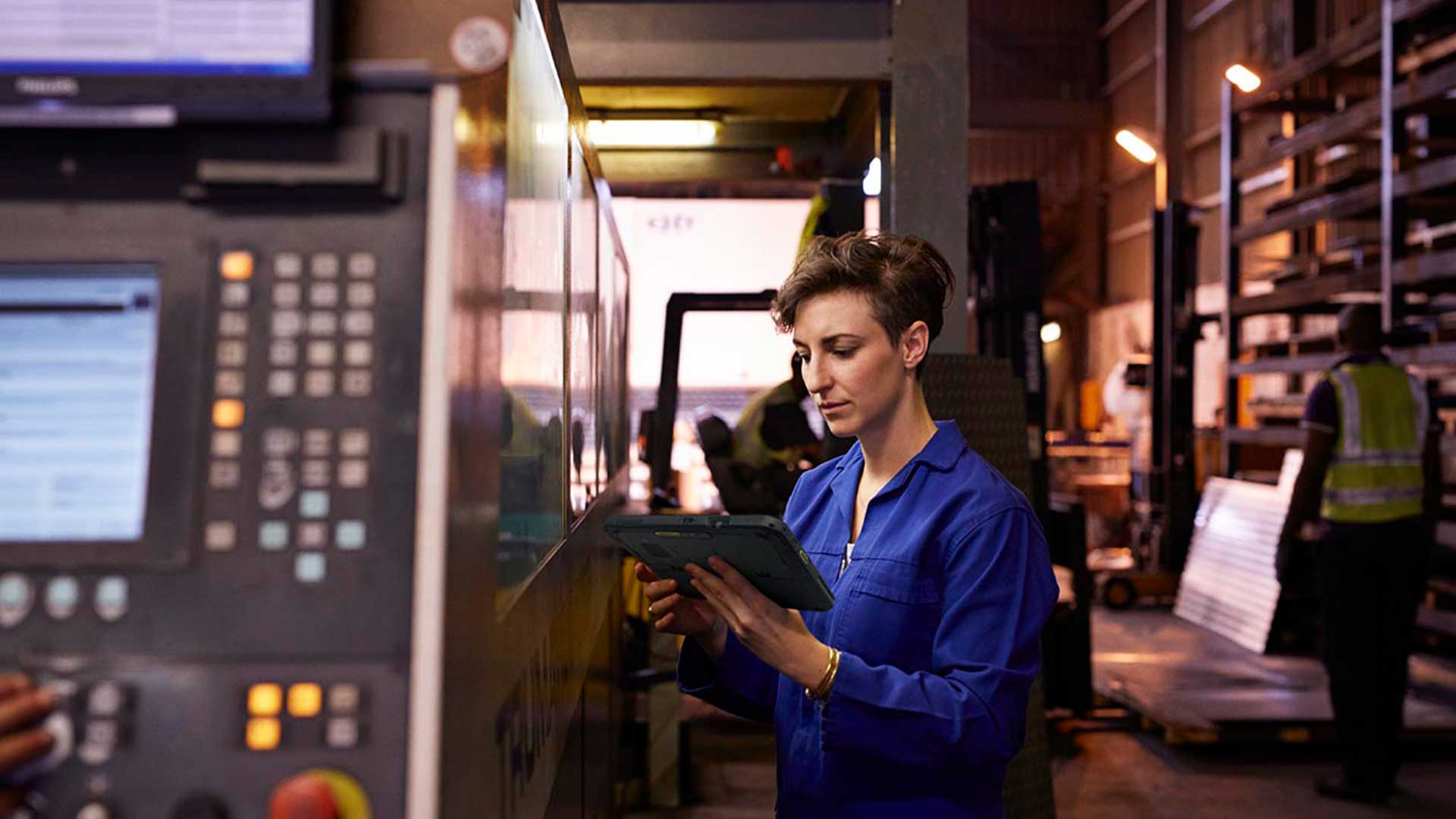Transform retail operations with Zebra’s retail technology solutions, featuring hardware and software for improving inventory management and empowering teams.
Streamline operations with Zebra’s healthcare technology solutions, featuring hardware and software to improve staff collaboration and optimize workflows.
Enhance processes with Zebra’s manufacturing technology solutions, featuring hardware and software for automation, data analysis, and factory connectivity.
Zebra’s transportation and logistics technology solutions feature hardware and software for enhancing route planning, visibility, and automating processes.
Learn how Zebra's public sector technology solutions empower state and local governments to improve efficiency with asset tracking and data capture devices.
Zebra's hospitality technology solutions equip your hotel and restaurant staff to deliver superior customer and guest service through inventory tracking and more.
Zebra's market-leading solutions and products improve customer satisfaction with a lower cost per interaction by keeping service representatives connected with colleagues, customers, management and the tools they use to satisfy customers across the supply chain.
Empower your field workers with purpose-driven mobile technology solutions to help them capture and share critical data in any environment.
Zebra's range of Banking technology solutions enables banks to minimize costs and to increase revenue throughout their branch network. Learn more.
Zebra's range of mobile computers equip your workforce with the devices they need from handhelds and tablets to wearables and vehicle-mounted computers.
Zebra's desktop, mobile, industrial, and portable printers for barcode labels, receipts, RFID tags and cards give you smarter ways to track and manage assets.
Zebra's 1D and 2D corded and cordless barcode scanners anticipate any scanning challenge in a variety of environments, whether retail, healthcare, T&L or manufacturing.
Zebra's extensive range of RAIN RFID readers, antennas, and printers give you consistent and accurate tracking.
Choose Zebra's reliable barcode, RFID and card supplies carefully selected to ensure high performance, print quality, durability and readability.
Zebra's rugged tablets and 2-in-1 laptops are thin and lightweight, yet rugged to work wherever you do on familiar and easy-to-use Windows or Android OS.
With Zebra's family of fixed industrial scanners and machine vision technologies, you can tailor your solutions to your environment and applications.
Zebra’s line of kiosks can meet any self-service or digital signage need, from checking prices and stock on an in-aisle store kiosk to fully-featured kiosks that can be deployed on the wall, counter, desktop or floor in a retail store, hotel, airport check-in gate, physician’s office, local government office and more.
Adapt to market shifts, enhance worker productivity and secure long-term growth with AMRs. Deploy, redeploy and optimize autonomous mobile robots with ease.
Discover Zebra’s range of accessories from chargers, communication cables to cases to help you customize your mobile device for optimal efficiency.
Zebra's environmental sensors monitor temperature-sensitive products, offering data insights on environmental conditions across industry applications.
Zebra's location technologies provide real-time tracking for your organization to better manage and optimize your critical assets and create more efficient workflows.
Enhance frontline operations with Zebra’s AI software solutions, which optimize workflows, streamline processes, and simplify tasks for improved business outcomes.
Empower your frontline with Zebra Companion AI, offering instant, tailored insights and support to streamline operations and enhance productivity.
The everything you need to rapidly and cost effectively develop high-performance AI vision applications on Zebra mobile computers.
Zebra Frontline AI Blueprints deliver adaptable, real-world AI frameworks that automate manual tasks and drive efficiency in high-pressure frontline operations.
Zebra Workcloud, enterprise software solutions boost efficiency, cut costs, improve inventory management, simplify communication and optimize resources.
Keep labor costs low, your talent happy and your organization compliant. Create an agile operation that can navigate unexpected schedule changes and customer demand to drive sales, satisfy customers and improve your bottom line.
Drive successful enterprise collaboration with prioritized task notifications and improved communication capabilities for easier team collaboration.
Get full visibility of your inventory and automatically pinpoint leaks across all channels.
Reduce uncertainty when you anticipate market volatility. Predict, plan and stay agile to align inventory with shifting demand.
Drive down costs while driving up employee, security, and network performance with software designed to enhance Zebra's wireless infrastructure and mobile solutions.
Explore Zebra’s printer software to integrate, manage and monitor printers easily, maximizing IT resources and minimizing down time.
Make the most of every stage of your scanning journey from deployment to optimization. Zebra's barcode scanner software lets you keep devices current and adapt them to your business needs for a stronger ROI across the full lifecycle.
RFID development, demonstration and production software and utilities help you build and manage your RFID deployments more efficiently.
RFID development, demonstration and production software and utilities help you build and manage your RFID deployments more efficiently.
Zebra DNA is the industry’s broadest suite of enterprise software that delivers an ideal experience for all during the entire lifetime of every Zebra device.
Advance your digital transformation and execute your strategic plans with the help of the right location and tracking technology.
Boost warehouse and manufacturing operations with Symmetry, an AMR software for fleet management of Autonomous Mobile Robots and streamlined automation workflows.
The Zebra Aurora suite of machine vision software enables users to solve their track-and-trace, vision inspection and industrial automation needs.
Zebra Aurora Focus brings a new level of simplicity to controlling enterprise-wide manufacturing and logistics automation solutions. With this powerful interface, it’s easy to set up, deploy and run Zebra’s Fixed Industrial Scanners and Machine Vision Smart Cameras, eliminating the need for different tools and reducing training and deployment time.
Aurora Imaging Library™, formerly Matrox Imaging Library, machine-vision software development kit (SDK) has a deep collection of tools for image capture, processing, analysis, annotation, display, and archiving. Code-level customization starts here.
Aurora Design Assistant™, formerly Matrox Design Assistant, integrated development environment (IDE) is a flowchart-based platform for building machine vision applications, with templates to speed up development and bring solutions online quicker.
Designed for experienced programmers proficient in vision applications, Aurora Vision Library provides the same sophisticated functionality as our Aurora Vision Studio software but presented in programming language.
Aurora Vision Studio, an image processing software for machine & computer vision engineers, allows quick creation, integration & monitoring of powerful OEM vision applications.
Adding innovative tech is critical to your success, but it can be complex and disruptive. Professional Services help you accelerate adoption, and maximize productivity without affecting your workflows, business processes and finances.
Zebra's Managed Service delivers worry-free device management to ensure ultimate uptime for your Zebra Mobile Computers and Printers via dedicated experts.
Find ways you can contact Zebra Technologies’ Support, including Email and Chat, ask a technical question or initiate a Repair Request.
Zebra's Circular Economy Program helps you manage today’s challenges and plan for tomorrow with smart solutions that are good for your budget and the environment.
The Zebra Knowledge Center provides learning expertise that can be tailored to meet the specific needs of your environment.
Zebra has a wide variety of courses to train you and your staff, ranging from scheduled sessions to remote offerings as well as custom tailored to your specific needs.
Build your reputation with Zebra's certification offerings. Zebra offers a variety of options that can help you progress your career path forward.
Build your reputation with Zebra's certification offerings. Zebra offers a variety of options that can help you progress your career path forward.

5 Technology Trends for Warehouse Mobile Devices in 2026
As Zebra rolls out its refreshed brand, I realize how privileged our role is as Independent Software Vendors in applying this new messaging around mobile devices. Traditionally, mobile devices are adopted in the warehouse to access and capture business information on the floor of operations. However, most innovations are left to the warehouse management system (WMS) vendor to recommend.
This habit conditions the adoption of newer technologies to the time when upgrading to a newer version of the WMS becomes viable, either financially or technically. Not anymore. We are now ready for a new mindset, one that encourages enterprises to look at mobile devices as tools for continuous improvement.
Equipped with the right software, mobile devices can embrace best practices and new technologies without waiting for upgrades in the WMS. What follows is a small sample of how mobile devices drive continuous improvement initiatives around five technologies trending in the warehouse today, throughout 2026 and beyond.
RFID
RFID is booming across all industries as tag prices become more accessible. Zebra goes one step further by providing technical resources that take care of all the heavy lifting around the handling of RFID data sets and the configuration of the readers. Case in point is DataWedge 15.0, an application that obtains and filters the RFID data from mobile readers like the MC33XR or the recently launched TC22R. By combining DataWedge 15.0 with an intelligent browser or terminal emulator, enterprises can feed RFID data sets into their existing applications, such as cycle counting, without writing one single line of code. Georgia SoftWorks, a Zebra ISV partner, produces one such intelligent client, called GSW ConnectBot. Through a combination of screen recognition and injection of predefined JavaScript code, GSW ConnectBot eliminates the time and cost barriers of adopting RFID technology with mobile readers.
GS1 Barcodes
GS1 Standards provide a common language to identify, capture, and share information the same way all over the world. The adoption of GS1 barcodes is an irreversible trend that impacts the identification of products across all industries, from manufacturing to retail, from healthcare to food processing. GS1 barcodes help identify a product with loads of data regarding physical properties, dates, places of origin and destination, shipment, manufacturing, and more.
Capturing GS1 barcodes will allow businesses to comply with regulatory and industry traceability requirements, while at the same time, significantly reducing the lapse of data capturing and eliminating manual data entry errors. Mobile applications do not need any modification other than to be run on an intelligent browser or telnet client, to start capturing all available information in GS1 barcodes.
To see an example, fire up your Zebra Designer app and create any GS1 barcode. Then, point your Zebra device to this GS1 demo page and follow the instructions there. The GS1 data will appear in front of you.
Voice Recognition
Adding voice recognition to a mobile device allows for eyes-up, hands-free operations, which in turn means a larger volume of goods processed per worker, and a safer environment for everyone walking and driving around the warehouse. Many voice solutions claim to run on Android devices. However, the trend for 2026 is adopting a voice solution that enhances the existing WMS workflows, not separate ones disconnected from the rest of the operation.
AccuSpeechMobile, a Zebra ISV partner, accomplishes this goal by integrating its voice recognition technology into Georgia SoftWorks’ universal Android client. This device-based approach enables very interesting multi-modal data capture use cases. Think, for example, of an all-touch device, such as the TC53 mobile computer, mounted on the arm of a worker, scanner facing forward. Our example’s workflow is completely voice-enabled, meaning that the worker is guided by voice to each location, instructed by voice to pick X quantities, and so on.
However, capturing GS1 data is better accomplished by scanner than by voice. So, when necessary, the worker lifts his arm, points to the barcode, and says “scan”. The voice command turns on the integrated scanner and captures the barcode data, allowing the worker to execute the task hands-free from end-to-end, never unmounting the device from the arm, without requiring a ring scanner. Voice recognition enables non-stop productivity unattainable through any other means.
Cloud Applications
Another irreversible trend, as WMS vendors continue to move their applications to the Cloud, is the migration of the mobile device interface away from telnet and SSH into Web. As enterprises add mobile devices during this transition, they will need a telnet interface to access the on-premises WMS while, at the same time, they will need a web browser to test the WMS on the Cloud.
Rather than having – and paying for – two separate clients to connect to each environment, partners can recommend Georgia SoftWorks’ universal Android client, which supports all necessary protocols in one single perpetual license. A universal client eliminates duplicate costs, and it also facilitates user training and device provisioning.
Provisioning leads me to the subject of Mobile Device Management (MDM) platforms. Starting with Android 11, MDM platforms no longer have access to applications’ private storage, which limits their ability to deploy configuration changes to most applications out there. Georgia SoftWorks solved this problem by allowing the configuration of GSW ConnectBot through a shared storage folder.
HTML
For all those WMS systems out there still running on legacy green screens, HyperText Markup Language (HTML) provides an unexpected modernization engine filled with enhancements. The enhancements do not come from cosmetic changes. The magic of an HTML-friendly telnet client lies in its ability to inject JavaScrpit code in the backplane of a WMS session. Before HTML, telnet clients were shut off from the outside world. Yet, there are plenty of situations in the warehouse where data is still captuured outside the WMS realm, forcing the workers to transcribe the information in time-consuming and error-prone processes.
An HTML-ready terminal emulator, such as GSW ConnectBot, can retrieve data from an outside source and feed it into the appropriate fields to a WMS application, or vice versa. Because GSW ConnectBot integrates both web and ssh/telnet session in the same client, data can even be passed back and forth between different sessions, regardless of the protocol used to connect each one. Of course, graphical elements can also be added to a green screen for productivity reasons, not cosmetical. Think of a screen where the input values are always some few constant options. With HTML it’s easy to add a scroll-down menu with such predefined input options. Entering data by tapping on a scroll-down menu is a lot faster than typing repetitive text each time the worker navigates though this screen.
Conclusion
Warehouse modernization does not require heavy investments. As most companies base their warehouse operations on mobile devices, it makes sense to prioritize technological initiatives that enhance the operation of existing infrastructure, in incremental steps, in the least intrusive fashion possible.
In this blog post, I have described initiatives that can be gradually implemented by intelligent connectivity software in the mobile devices, without imposing any changes whatsoever to the existing WMS application. Examples of such initiatives are picture-taking in the receiving process, feeding RFID data directly into WMS systems, capturing GS1 barcodes, and operating devices by voice. Deploying Georgia SoftWorks universal connectivity client in the Zebra devices enables all these enhancements in both telnet and web connections in one single perpetual license.
To see live demos of all these initiatives, visit Mobilis in the Zebra’s Sales Kick Off and Channel Partner Summit, taking place in January 2026 in Orlando, Florida, or visit the Zebra’s ISV Partner Locator.
Zebra Developer Blog
Zebra Developer BlogZebra Developer Blog
Are you a Zebra Developer? Find more technical discussions on our Developer Portal blog.
Zebra Story Hub
Zebra Story HubZebra Story Hub
Looking for more expert insights? Visit the Zebra Story Hub for more interviews, news, and industry trend analysis.
Search the Blog
Search the BlogSearch the Blog
Use the below link to search all of our blog posts.
Most Recent
Legal Terms of Use Privacy Policy Supply Chain Transparency
ZEBRA and the stylized Zebra head are trademarks of Zebra Technologies Corp., registered in many jurisdictions worldwide. All other trademarks are the property of their respective owners. Note: Some content or images on zebra.com may have been generated in whole or in part by AI. ©2025 Zebra Technologies Corp. and/or its affiliates.




